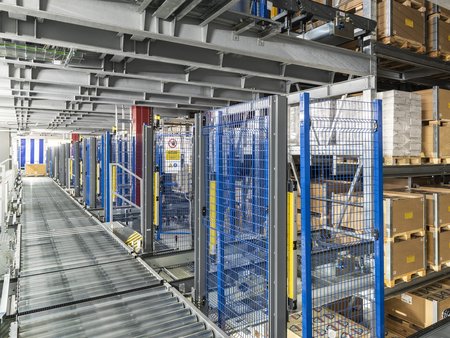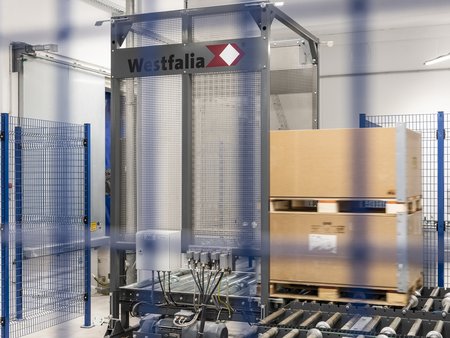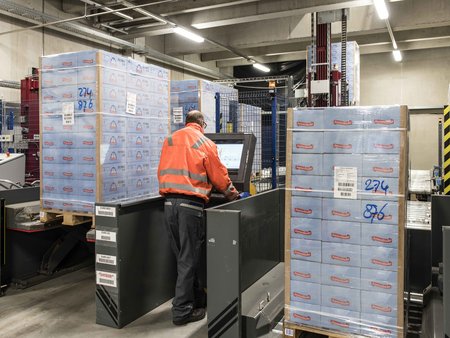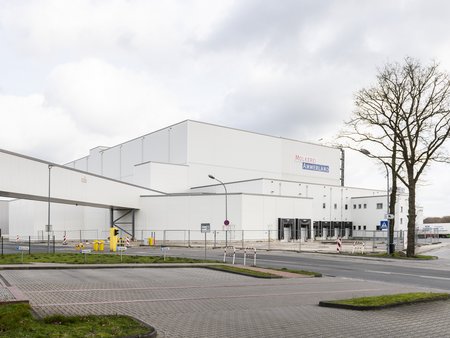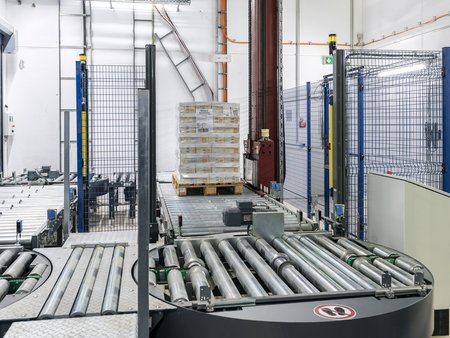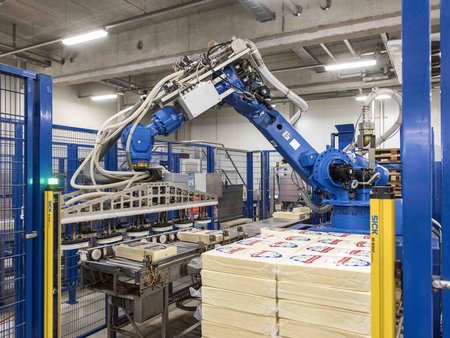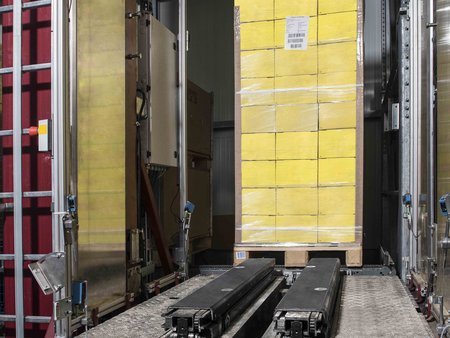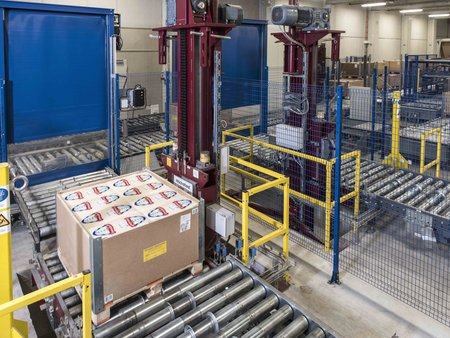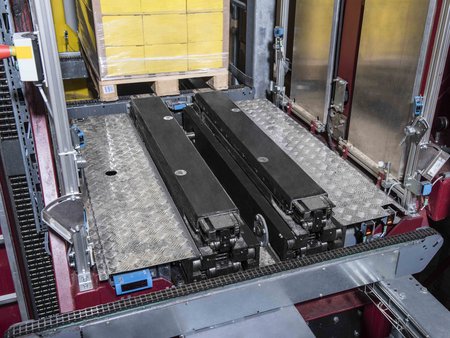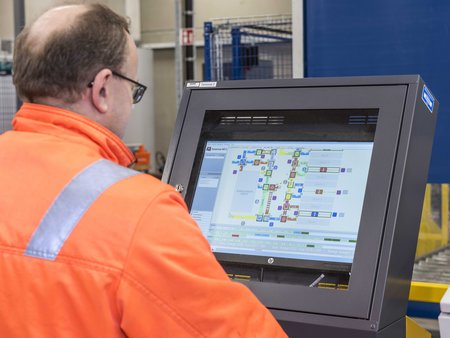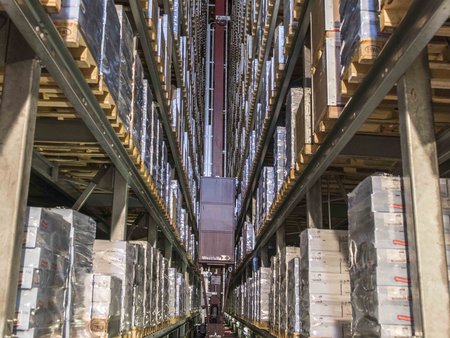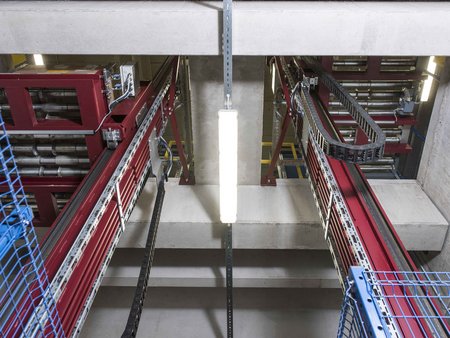Ammerland is the name of a region in the north-western part of German, in Lower Saxony, near the city of Oldenburg. This is where the Ammerland eG dairy of Wiefelstede-Dringenberg has been producing high-quality dairy products such as milk, cheese and butter ever since 1885. The company supplies its goods to customers in more than 60 countries worldwide.
Growing production
In 2014, Westfalia built an automatic high-bay warehouse for the Ammerland dairy, to serve as a maturing warehouse. However, the dairy’s strong expansion policy and continuously growing production volume soon made more storage capacity necessary, so the 2014 design included an option for doubling the storage capacity for the next stage of expansion.
Carsten Lüdeking, responsible project manager at Westfalia:
“Extensive conversion work had to be carried out to connect the new storage area so that all nine aisles could be used in a large system.”
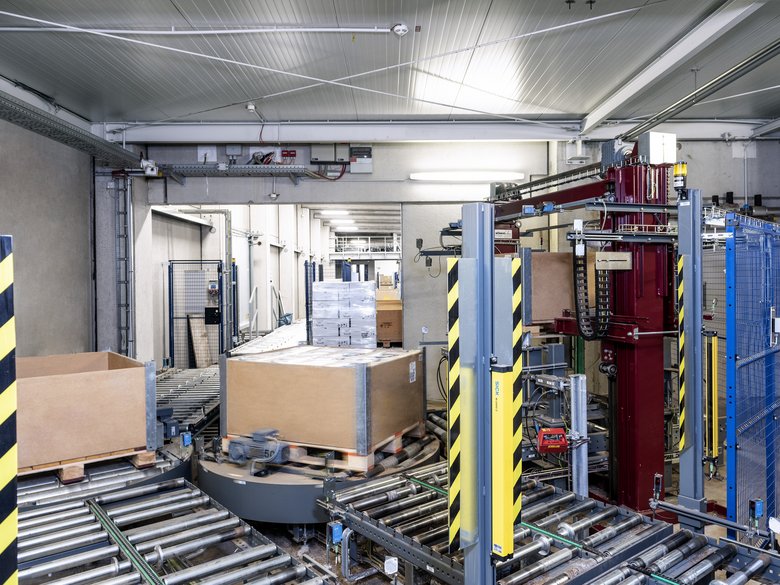
Double storage capacity
In 2020, Ammerland doubled the storage capacity by another 24,500 rack spaces. The hitherto existing 4-aisle double-deep storage system with telescopic fork was supplemented by five new aisles and an extensive optimisation of the conveyor technology. The intervention in the existing plant was carried out during operation.
Improved transfer speed, increased throughput
When cheese, butter, or mozzarella come out of production they enter the storage system via a 120-metre-long conveyor system. In the conveyor tunnel, mainly the throughput of the pallets was increased. The frequency converters of the roller conveyor drives were retrofitted to improve the transfer speed. Another new feature: The pallets now cross the bridge as pairs, are subsequently separated again and can then be stored in all aisles via a new junction. A total of nine storage and retrieval machines are now supplying more than 46,000 rack spaces for Euro, industrial, plastic and one-way pallets.
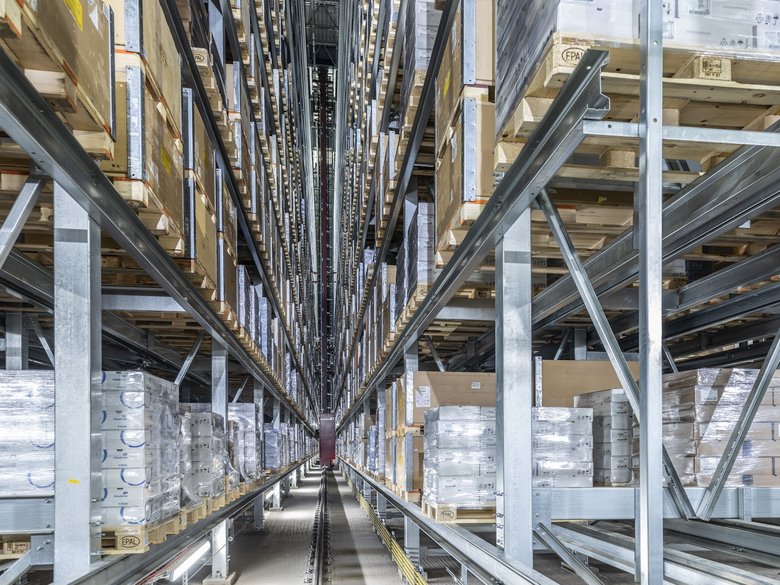
Different temperature zones in a warehouse
As one of the warehouse aisles only contains mozzarella and butter, i.e. products that require a colder temperature zone, an additional, single-deep aisle with only 4 degrees Celsius is created. The other cheese products are stored at 8 degrees Celsius. In the event of a failure, mozzarella and butter can also be stored in the other aisles and then returned automatically. This is just one of the special strategies implemented by the Savanna.NET® warehouse management and material flow control software. For this, a series of performance tests were previously carried out in the Demo3D simulation software tool.
Jan-Hendrik Wieland, software developer at Westfalia:
“The material flow is extremely complex, so we had to model a large number of different possibilities when programming Savanna.“
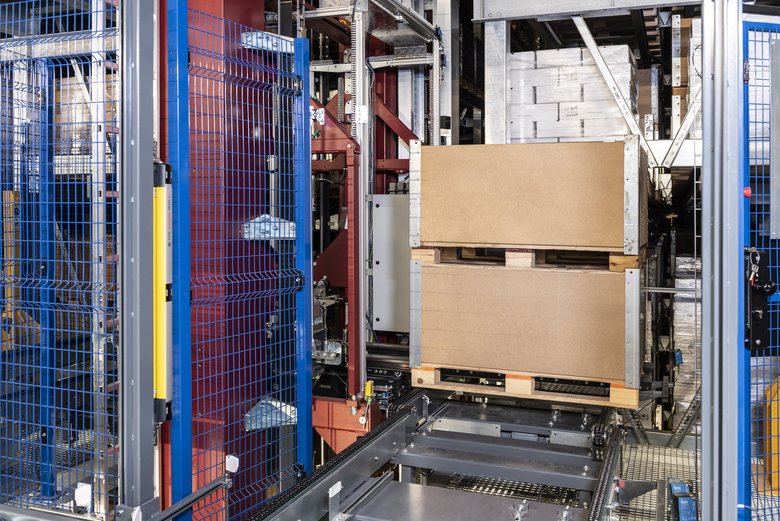
Heavy cheese wheels require a special conveyor technology
Ammerland stores its cheese in crates which are transported in the form of industrial pallets with frames. Transport weights of up to 1.5 tons per pallet can occur. A lateral extension with an appropriate vertical conveyor controls the transport of these heavy pallets to the newly created dispatch lines. Due to their weight, at stock level they would have had to be unstacked first.
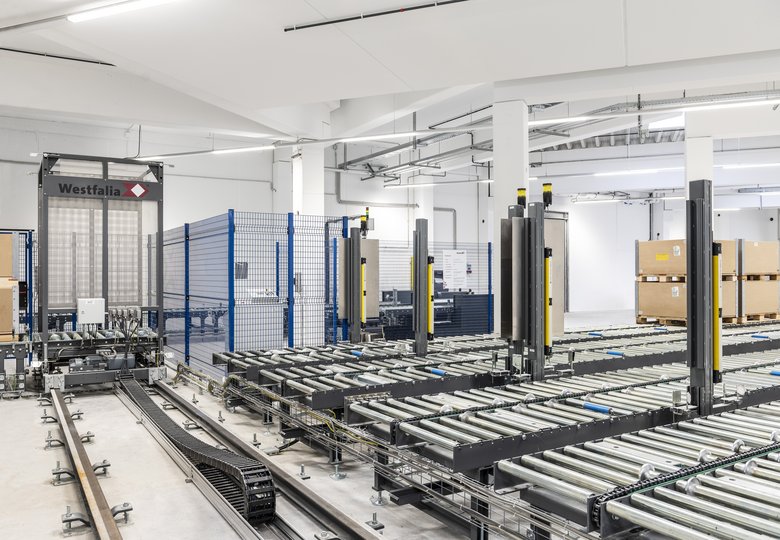
Additional level for retrieval increasing the performance of the system
Westfalia implemented another level above the existing warehouse which is exclusively used for retrieval to relieve the existing retrieval level on the ground floor. In addition, one of the new driven supply paths in the shipping area is designed for special strategies such as Express Kanban or Kanban.
Here are some more references that might be of interest to you:
Kloosterboer Lelystad B.V.
Jan Zandbergen B.V.
D'arta
Marketing

Marketing & Kommunikation
Ask our sales team
Find answers to your automated warehouse logistics questions and learn more about our technologies and systems. By e-mail via the contact form or by phone. We are looking forward to your request!

